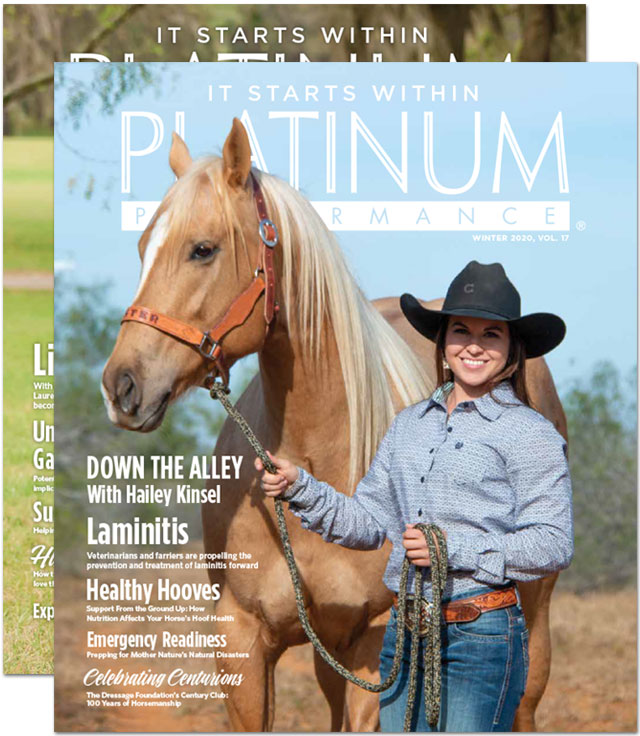Dietary Management May Provide Support For Summer Time Seasonal Allergies
It is summer time to the delight of equine enthusiasts who are able to bask in the warm weather and spend their longer days at the barn. However, for those who have horses dealing with recurrent sweet itch, summer can bring a sense of dread as the hotter temperatures create a perfect atmosphere for seasonal allergies and the myriad of things that cause them. With careful management, including the use of supportive or targeted nutrients, it is possible to support sweet itch, so that you and your horse are able to enjoy the season.
What is Sweet Itch?
Sweet itch goes by many names, including summer itch, Queensland itch and Insect Bite Hypersensitivity (IBH). Technically known as Culicoides hypersensitivity, it is a type of seasonal dermatitis caused by an allergy to the saliva of biting insects most often from Culicoides spp., which are known in different parts of the country as midges, biting gnats and “no-see-ums.” Mosquitoes, black flies, stable flies, horse flies and deer flies may also contribute to allergic reactions. The horse’s skin becomes hypersensitive and reacts to the saliva of bites that can result in intense itching. Raised areas of the skin, called wheals, and swelling may be seen, and horses may aggressively rub their skin. Severe rubbing can cause hair loss of the coat, mane and tail, as well as areas of raw or broken skin and bleeding or weepy sores that may become vulnerable to infection and summer sores. These self-inflicted manifestations of sweet itch are most often seen under the mane of the neck, under the belly or around the dock of the tail and may also be seen on the face, shoulders and withers. Sweet itch is most prevalent in warmer climates and can be especially difficult to control during the spring and summer months.

What is an Allergy?
An allergy is an immune condition characterized by hypersensitivity to specific protein molecules called allergens. Most commonly, allergic reactions affect the skin and respiratory airways in horses and generally develop in response to exposure to seasonal allergens like molds, spores, insect bites and certain proteins present in pasture grasses.
Start Supplementing in Spring Time
If you know that your horse battles sweet itch and other allergies when the weather gets warm, plan on adding Platinum Skin & Allergy formula into your horse’s supplement program 4 to 6 weeks ahead of the season change. This allows the nutrients to circulate in the body, and may help to prepare your horse’s natural defense systems for future seasonal allergy insults.
Kasey Perry-Glass supports her horses with Platinum Skin & Allergy, so their bodies can maintain proper histamine levels.
PHOTOS BY ELIZABETH HAY PHOTOGRAPHY
How Nutrition Can Help Manage Sweet Itch
Dietary management may provide support for seasonal allergies from the inside out. Fatty acids are constituents of every single cell membrane throughout the body of the horse. There are several types of fatty acids but specifically omega-6 and omega-3 fatty acids are directly correlated to the seasonal allergic response. Metabolites of the omega-6 fatty acids induce strong inflammatory responses, which have been linked to many disorders. In the equine diet, cereal grains, like corn, oats and barley, grainbased feeds and corn oil contain high levels of omega-6 fats. In contrast, omega-3 fatty acid metabolites have the capability to promote a healthy inflammatory response to support seasonal allergies. Fresh grass contains excellent levels of omega-3 fatty acids. Flaxseed and flax oil provide plant-based omega-3 fatty acids and nutrients that are precursors to both docosahexaenoic acid (DHA) and eicosapentaenoic acid (EPA). DHA and EPA are long-chain omega-3 fatty acids that help promote normal healthy immune response to seasonal allergens.
Other nutritional ingredients such as Quercetin can have a positive impact on the seasonal allergic response associated with sweet itch. It is widely used for its antioxidant properties and is a natural antihistamine that helps maintain normal histamine levels.

Prevention & Treatment
Careful management of sweet itch, as well as other seasonal skin allergies and dermatitis, is imperative to prevent a horse from harming himself by rubbing itchy, irritated skin. Preventing insect bites as much as possible may be the best course of action for defeating sweet itch.
- Use a fly spray liberally that combines repellent and pesticide ingredients.
- Try a barrier technique like a fly sheet with neck, belly and tail coverage and a fine-mesh fly mask.
- Minimize standing water, which is where midges live and breed. If possible, keep horses away from ponds and marshes, and clean water tanks often.
- Stable horses during times of the day when midge activity is high like the hours around dawn and dusk.
- Provide ceiling or stall box fans. Midges are weak flyers and circulating air can help prevent them from landing.
- Clean manure often and keep manure pile as far from horses as possible.
- Supplement with a Platinum Wellness formula, containing a plant-based source of omega-3 fatty acids to promote healthy skin and coat, in combination with Platinum Skin & Allergy to provide targeted support for seasonal allergies.
- Veterinarians may prescribe corticosteroids that can be successful in treating acute skin irritation and are often used with antihistamines.
Science to Support Omega-3 Fatty Acids
Numerous studies support the fact that omega-3 fatty acids can provide support during a seasonal allergic reaction. As evidence of this positive effect of the omega-3 fatty acids, one study showed allergic skin reactions to the extract of Culicoides spp., the aggravator of sweet itch, were reduced in horses after 42 days of flaxseed supplementation (O’Neill W, McKee S, Clarke A. Can J Vet Res 2002).
Another study looked specifically at skin reactions to seasonal allergens following intradermal skin injections in horses receiving a comprehensive omega- 3 formula, which contained ground flaxseed and cold-pressed flax oil, algal DHA and a variety of micronutrients. In the study, all reactions were significantly reduced after 11 weeks of supplementation. For example, wheal sizes for a mixed grass antigen decreased by more than 50 percent post-injection in horses ingesting the supplement when compared to their values prior to supplementation. Similar results were noted in response to the Mosquito Culicidae and Culicoides spp. antigens.

Providing a Fan May Help
One way to help your horse that might be struggling with sweet itch is to provide ceiling or stall box fans. Midges are weak flyers and circulating air can help prevent them from landing.
Bringing Your Horse Back into Balance
Due to the ubiquitous nature of allergens, feeding a balanced diet is one of the best defenses against seasonal allergies. Providing a comprehensive supplement that offers omega-3 fatty acids, trace minerals, vitamins and antioxidants, such as those found in the Platinum Wellness formulas, is an excellent way to support healthy skin and coats.
During times of high seasonal allergen exposure or an allergic reaction, Platinum Skin & Allergy formula has DHA and Quercetin, which can be used in addition to the Platinum Wellness formulas: Platinum Performance® Equine, Platinum Performance ® GI and Platinum Performance® CJ.
Itchy Horses: Other Common Seasonal Skin Issues
Although skin problems can pester horses any time of the year, the warm and moist months of spring and summer seem to be when they most often occur. Dry skin, hives, scratches, rain rot and summer sores can result in seasonally itchy or uncomfortable horses. Providing a balanced diet based on forage that includes omega-3 fats and antioxidants can be a first line of defense to support proper immunity and skin and coat health.
Why does My Horse have Dry Skin in Wet Weather?
Dry, flaky skin and a dull hair coat in horses can be caused by several health issues including parasites, ulcers, or as a symptom of dermatitis, sweet itch or rain rot. It can be in response to insect bites and a sign of an allergic response. Dry skin may also have a dietary component and is sometimes seen in horses that need a boost of skin-supporting omega-3 fats or biotin, or are lacking certain minerals, like zinc or copper. During the summer, a common reason is likely due to the horse being in a constant wet-dry cycle from being in rainy conditions or overbathing. With the hot weather, many horses will be hosed off often and receive more baths than other times of the year. Bathing with shampoos can deplete the horse’s natural coat oils causing dry skin. Try to limit soap baths to when really necessary and no more than once a week.
My Horse is Covered in Hives! Help!
Hives are the common name for urticaria which manifest in response to an allergy as raised, fluid-filled swellings called “wheals.” They can range in size from small, 1/2 inch bumps to much larger widths and are usually seen on the horse’s neck, back and flank areas. Hives can be itchy and aggravating to horses. There are many causative factors for them, but, seasonally, hives are often seen in response to bug bites, pollens and other seasonal allergens. They may subside on their own, or bathing with cool water may get rid of a topical allergy. If they are caused by insects, fly gear such as fly sheets, boots and masks may help to prevent recurrence. For more severe cases, hives may be treated with steroids or antihistamines under a veterinarian’s supervision.
What are Scratches?
Scratches, also called “dew poisoning,” “mud fever” or equine pastern dermatitis (EPD) by veterinarians, is a common inflammatory skin disease that affects the back of the pastern, fetlock and heel of the lower legs. Although it can affect any horse at any time of the year, it is often seen seasonally during warm, wet and muddy weather particularly in horses with long feathers, such as draft horses. Horses with white socks also are more likely to be affected. The constant wetting and drying of skin breaks down the horse’s natural barrier and sets up an environment for it to become chapped and cracked. Small skin cracks allow bacteria and fungi to enter resulting in inflammation. The legs may become red, irritated and scabby with crusty bumps that weep or bleed. Depending on the severity, the legs may be hot to the touch and painful, potentially resulting in lameness. Your veterinarian should be consulted on the best course of action, but mild cases may be treated by washing the affected area with antibacterial soaps or antifungal solutions and topicals. Keep the legs clean, dry and exposed to air. More severe cases or recurrent issues will need medications and veterinary care.
Is there Anything I Can do to Get Rid of Rain Rot?
Rain rot (rain scald or dermatophilosis) is common during rainy seasons and in hot, humid locations. It is a bacterial skin infection caused by the microorganism Dermatophilus congolensis. With a consistently wet coat and a break in the skin, the bacteria enters the body. Symptoms of rain rot include dry skin and loose, flaky hair that may fall out in patches when grooming. Hard, painful crusts may be felt or seen, typically on the back and rump, in more severe cases. Rain rot can be uncomfortable, itchy and even painful. For infected horses, anti-microbial shampoos may be used to treat and clean the area. Soak, soften and remove scabs as much as possible to allow oxygen exposure to help heal. Do not share brushes or gear used by affected horses as rain rot is contagious. For severe cases, veterinary intervention may be needed for antibiotics. To prevent rain rot, try to keep coats clean, dry and exposed to air. Groom horses daily, especially ones that wear sheets regularly.
What Can I do to Help My Horse with Summer Sores?
Summer sores (properly known as cutaneous habronemiasis) are another seasonal nuisance caused by the larvae of the stomach worm Habronema or Draschia species. Flies deposit the larvae into irritated or broken skin tissue, as well as other moist areas of the body such as eyes, ears, lips, sheath and vulva. An abnormal life step for these stomach worms, the larvae will not grow into adult worms on the skin but will cause an inflammatory reaction characterized by redness, swelling and intense itching. Rubbing to relieve the itch and irritation can result in raw, weepy lesions filled with granulation tissue like proud flesh. Veterinarians will need to treat summer sores and will likely use a combination of anti-inflammatory, antimicrobial and larvicidal components. The dewormers—ivermectin or moxidectin—are often used to kill both adult worms in the stomach as well as larval forms in skin tissue. Prevention in the way of aggressive fly control and efficient manure removal can greatly reduce the incidence of summer sores.

by Emily Smith, MS,
Platinum Performance®




